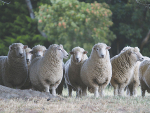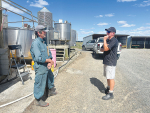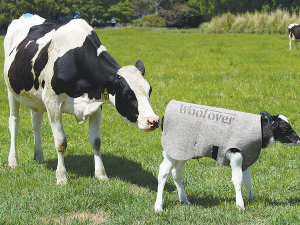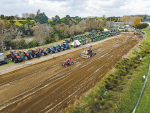Facial Eczema (FE) is a disease which causes lowered production and sometimes death from liver damage, says DairyNZ.
Fungal spores produced by the fungus Pithomyces chartarum growing on pasture produce a toxin which when ingested by cattle damage the liver and bile ducts.
The damaged liver cannot rid the body of wastes and a breakdown product of chlorophyll builds up in the body causing sensitivity to sunlight, which in turn causes inflammation of the skin.
The first sign of FE is a drop in milk production occurring soon after the intake of toxic spores (subclinical FE). Cows are restless at milking time, seek shade and lick their udder. Another drop in production occurs when physical symptoms (clinical FE) become obvious. Exposed unpigmented or thin skin thickens and peels. Watch white areas, teats, inside the hind legs, and the udder and udder support area.
Not all animals affected with FE show physical symptoms although liver damage has occurred. Milk production of animals with subclinical FE can be depressed by up to 50%. It is estimated for every three in 100 cows showing clinical FE, about 70% of the herd may have subclinical FE.
Badly damaged liver tissue will not regenerate. Chronic wasting and/or death may occur at the time of damage or months later when the animal is under stress e.g. calving.
The fungus produces spores when grass minimum temperatures are above 12°C for two or three nights and humidity is high (usually January to May). The fungus grows on soft litter at the base of the pasture so hard grazing during danger periods increases the risk of spore intake as does topping which increases the build up of soft litter.
To prevent FE, start control early. Ideally start zinc treatment two to three weeks before the spore growth danger period for maximum protection.
Administer zinc as a drench or in water/feed supplies, or use zinc bullets as a standby; spray pasture with fungicide. Map high and low risk areas of the farm through spore counting and check prevention regimes where young stock are being grazed.
FE spores love fresh new grass. Beware of conditions where rain produces fresh growth after a dry period, followed by another period of dry where the grass again dries (burns up).
Cows showing clinical signs of FE can recover if prompt action is taken:
Dry off affected cows now, to reduce pressure on the liver
Put zinc cream on white areas of the coat and the udder (if affected)
Move affected stock into dense shade. Indoors is best (hay-barn, calf-rearing and implement sheds) but make sure there is a good water supply and supplementary feed available for cows
Feed cows at night, so they are not exposed to sunlight and stop hard grazing so cows do not graze down into dead matter where the spores that cause FE live
Feeding maize and/or silage can help, but cows will still tend to graze if they are kept on pasture
Make sure the diet is balanced, with good levels of energy and protein.
Treating very sick cows
-
Use a starter drench to boost metabolic function
-
Use vitamin B12 supplementation
-
Seek veterinary advice regarding additional pain relief treatment.
-
Practical indicators of recovery include liveweight gain and improvement in body condition score (BCS). Be aware that animals can take up to 12 months to fully recover.
-
Animals with a previous history of clinical FE have a lower chance of recovery than previously unaffected animals.
-
When deciding to cull cows, act early before body condition score and the severity of the condition cause unnecessary distress and suffering.
-
If sending cows for processing farmers need to be aware that animals will not be accepted if emaciated or with severe skin damage (sores, weeping wounds etc).











